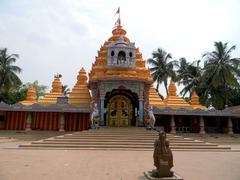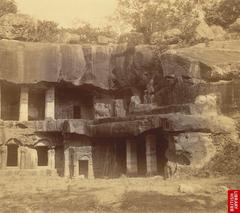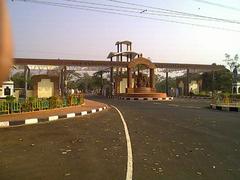
Champakesvara Siva Temple: Visiting Hours, Tickets, and Complete Guide to Bhubaneswar’s Historical Heritage
Date: 04/07/2025
Introduction
Bhubaneswar, aptly named the “Temple City of India,” is celebrated for its extraordinary concentration of temples that epitomize the Kalinga architectural style and Odisha’s vibrant spiritual traditions. Among these monuments, the Champakesvara Siva Temple stands out for its historical, architectural, and religious significance. This guide provides a comprehensive overview of the temple’s origins, design, visiting hours, entry details, accessibility, nearby attractions, and responsible tourism practices—offering everything you need to plan a meaningful visit (historyofodisha.in; incredibleodisha.in).
Historical and Cultural Context
Bhubaneswar’s Sacred Landscape
Established as a key religious center since at least the 3rd century BCE, Bhubaneswar flourished under dynasties like the Somavamsis and Eastern Gangas. These rulers supported the construction of hundreds of temples between the 7th and 13th centuries CE, solidifying the city’s reputation as a bastion of Shaivism (historyofodisha.in). The Champakesvara Siva Temple, built between the late 10th and early 12th centuries CE, is a significant product of this era.
The Kalinga Architectural Style
The Kalinga school is characterized by its harmonious proportions and distinct forms, namely the Rekha Deula (curvilinear sanctum tower), Pidha Deula (pyramidal assembly hall), and Khakhara Deula (barrel-vaulted shrine) (slideshare.net). The Champakesvara Siva Temple showcases these features, with sculpted doorways, intricate iconography, and a prominent rekha shikhara.
Architectural Features of Champakesvara Siva Temple
Vimana (Sanctum Tower)
The vimana rises in a graceful curve, crowned by the amalaka and kalasha, symbolizing cosmic unity and abundance. While less imposing than the Lingaraja Temple, its detailed carvings and vertical emphasis are hallmarks of the Kalinga tradition (hinduphilosophyholypilgrimage.blogspot.com).
Jagamohana (Assembly Hall)
Serving as the congregational space, the jagamohana features a tiered pyramidal roof, ornate entranceways, and walls adorned with deities and mythological scenes. The understated interior draws attention to the sanctum.
Sculptural Ornamentation
The exterior is richly decorated with depictions of Hindu deities, celestial beings, floral motifs, and mythological narratives. Subsidiary niches house guardian figures, while erotic motifs reflect Odisha’s medieval artistic traditions (hinduphilosophyholypilgrimage.blogspot.com).
Materials and Techniques
Built with locally sourced laterite and sandstone, the temple employs dry masonry for durability and intricate carving.
Unique Elements
- Torana (Gateway): Features elaborate scrollwork and symbolic figures.
- Naga Columns: Serpent motifs flank the entrance, representing protection and fertility.
- Amalaka and Kalasha: The crowning stonework is accompanied by guardian figures, echoing the iconography of other medieval temples.
Religious and Community Significance
The Champakesvara Siva Temple continues to be an active center of worship, particularly during Maha Shivaratri and other festivals. Its sanctum houses a revered Shiva lingam, attracting devotees, scholars, and cultural enthusiasts alike. The temple also plays a role in community life, with rituals and gatherings reinforcing its living heritage (cultureandheritage.org).
Preservation and Conservation Efforts
Challenges
The temple faces threats from weathering, biological growth, pollution, and urban encroachment. The porous nature of its stone makes it vulnerable to erosion, especially in humid conditions.
Conservation
The Archaeological Survey of India (ASI) spearheads preservation using a blend of traditional and modern techniques (cultureandheritage.org). Community involvement ensures that conservation respects the temple’s active religious function.
Key initiatives include:
- Structural stabilization and repair
- Cleaning and restoration of carvings
- Improved drainage systems
- Ongoing maintenance by temple authorities and community volunteers
Visitor Information
Visiting Hours and Entry
- Open Daily: 6:00 AM to 8:00 PM
- Entry Fee: Free for all visitors
- Donations: Welcome to support temple upkeep
Accessibility
- Location: Ambika Sahi, Old Town, Bhubaneswar—close to other historic temples and Bindu Sagar Lake (Wikipedia)
- Transport: Accessible via taxi, auto-rickshaw, city bus; railway station and airport within 5 km
- Physical Access: Uneven stone paths and a few steps; assistance recommended for those with limited mobility
Facilities
- Amenities: Basic; no restrooms or souvenir shops within the temple grounds
- Local Guides: Available near the temple for historical and cultural insights
- Food and Drink: Small eateries and tea stalls nearby; carry water and wear comfortable shoes
Visitor Etiquette
- Remove footwear before entering inner sanctum
- Dress modestly (shoulders and knees covered)
- Maintain silence and decorum, especially during rituals
- Photography is permitted in exterior areas; avoid flash, and seek permission before photographing rituals or devotees
Nearby Attractions
- Parasuramesvara Temple: 7th-century marvel, 157 meters east
- Bindu Sagar Lake: Sacred waterbody for ritual purification
- Lingaraja Temple: Major pilgrimage site, approx. 1 km away
- Mukteshwar Temple, Rajarani Temple, Vaitala Temple: Additional gems of Bhubaneswar’s temple circuit
Responsible Tourism
- Respect local customs: Observe rituals quietly and follow community norms
- Wildlife awareness: The temple precinct is home to revered snakes; do not disturb them
- Environmental care: Carry reusable bottles, avoid littering, and support local artisans
- Safety: Be cautious on slippery stone surfaces during monsoon; keep personal belongings secure
For more tips on ethical tourism, see The Invisible Tourist.
Frequently Asked Questions (FAQs)
Q: What are the Champakesvara Siva Temple visiting hours?
A: 6:00 AM to 8:00 PM, daily
Q: Is there an entry fee or tickets required?
A: No, entry is free for all visitors
Q: Are guided tours available?
A: Yes, local guides can be hired near the temple
Q: Is photography allowed?
A: Permitted in exterior areas; avoid flash and seek permission for ritual photography
Q: Is the temple accessible for people with disabilities?
A: Some uneven ground and steps; assistance is advised
Q: What other sites are nearby?
A: Parasuramesvara Temple, Bindu Sagar Lake, Lingaraja Temple, Mukteshwar Temple, Rajarani Temple
Summary
The Champakesvara Siva Temple is a testament to Odisha’s enduring Shaivite faith and Kalinga architectural mastery. Its living traditions, serene setting, and proximity to other historical sites make it essential for pilgrims, architecture enthusiasts, and cultural travelers. With free entry and ample visiting hours, it offers an accessible and authentic window into Bhubaneswar’s sacred heritage. Visitors are encouraged to respect local customs, support community preservation efforts, and approach the site with reverence and curiosity (historyofodisha.in; Official Bhubaneswar Tourism Website; Native Planet).
For more in-depth guides, download the Audiala app and follow our updates on Bhubaneswar’s temple circuit and Odisha’s living traditions.
References
- History of Evolution of Temple Architecture in Odisha
- Lingaraj Temple Bhubaneswar
- Indo-Aryan Temples of Orissa
- Case Study: Revival and Restoration of Lingaraj Temple Bhubaneswar
- Holy Pilgrimage Temples in Bhubaneswar
- Champakesvara Siva Temple - Wikipedia
- Shiva Temples of Bhubaneswar - Native Planet
- Champakesvara Siva Temple Overview - Touristlink
- Official Bhubaneswar Tourism Website
- Responsible Tourist Tips for Ethical Tourism - The Invisible Tourist









